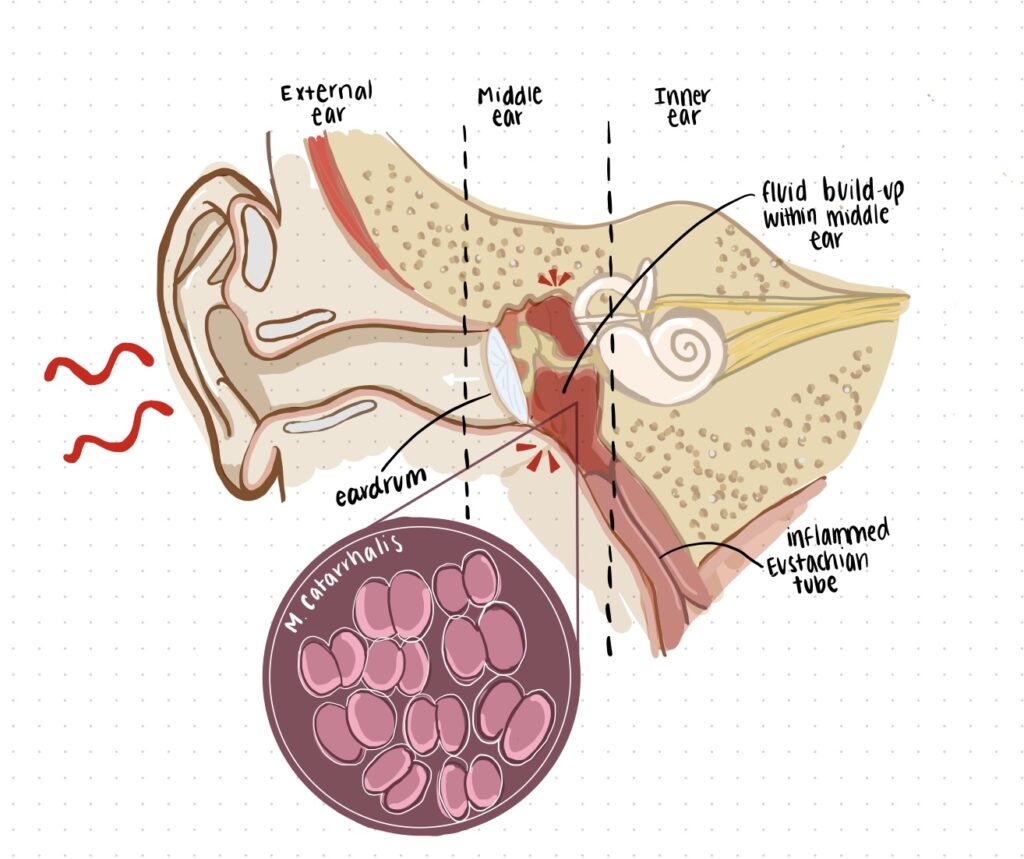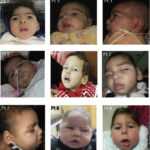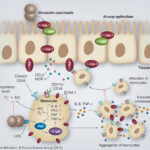Acute otitis media (AOM) is a common middle ear infection, especially in children. One of the major bacterial pathogens responsible for AOM is Moraxella catarrhalis. Although often overshadowed by Streptococcus pneumoniae and Haemophilus influenzae, M. catarrhalis plays a crucial role in pediatric ear infections. Understanding its impact, symptoms, treatment options, and preventive measures is essential for managing and reducing the disease burden.

What is Moraxella Catarrhalis?
Moraxella catarrhalis is a gram-negative, aerobic diplococcus bacterium that primarily colonizes the upper respiratory tract. It is an opportunistic pathogen, meaning it can exist harmlessly in the nasopharynx but cause infections when the immune system is compromised or when other conditions promote bacterial growth.
How Moraxella Catarrhalis Causes Acute Otitis Media
In children, M. catarrhalis spreads from the nasopharynx to the middle ear through the eustachian tube, often following viral upper respiratory infections. The bacteria contribute to inflammation and pus formation in the middle ear, leading to pain and hearing difficulties.
Symptoms of Moraxella Catarrhalis Acute Otitis Media
- Ear pain (otalgia)
- Hearing loss or muffled hearing
- Fluid drainage from the ear (otorrhea)
- Fever
- Irritability in infants and toddlers
- Trouble sleeping
- Loss of appetite
Diagnosis of Moraxella Catarrhalis AOM
Physicians diagnose AOM based on clinical symptoms and an otoscopic examination, which may reveal:
- Redness and bulging of the tympanic membrane
- Fluid accumulation behind the eardrum
- Decreased eardrum mobility
A tympanocentesis (fluid aspiration from the middle ear) may be performed in severe or recurrent cases to identify bacterial involvement.
Treatment Options
1. Antibiotic Therapy
Since M. catarrhalis is often beta-lactamase-producing, it exhibits resistance to penicillin. The following antibiotics are recommended:
- Amoxicillin-clavulanate (Augmentin)
- Cefuroxime
- Azithromycin or clarithromycin (for penicillin-allergic patients)
2. Symptom Management
- Pain relief: Acetaminophen or ibuprofen for fever and ear pain.
- Warm compresses: May provide additional comfort.
- Observation: In mild cases, doctors may recommend watchful waiting before prescribing antibiotics.
Complications if Left Untreated
- Chronic otitis media with effusion (fluid buildup behind the eardrum)
- Hearing loss
- Mastoiditis (infection of the mastoid bone)
- Meningitis (rare but severe complication)
Prevention Strategies
- Vaccination: Pneumococcal and influenza vaccines help reduce respiratory infections that predispose individuals to AOM.
- Breastfeeding: Provides immune protection to infants.
- Reducing pacifier use: Excessive pacifier use increases the risk of ear infections.
- Avoiding secondhand smoke: Smoke exposure weakens the respiratory tract’s defenses.
- Hand hygiene: Reducing viral infections can prevent secondary bacterial complications.
Moraxella catarrhalis is a significant pathogen in acute otitis media, particularly in children. Prompt recognition, proper antibiotic therapy, and preventive measures can minimize its impact and reduce complications. Parents and healthcare providers should remain vigilant in managing and preventing this common yet potentially serious ear infection.

